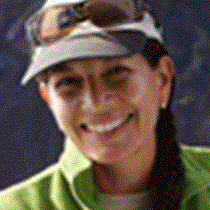Sombrero Chino & Sullivan
From Santa Fe Island we sailed at night towards the fourth largest of the Galápagos Islands, Santiago, to spend the morning in Sombrero Chino and Bainbridge Islets. These are small tuff cones, probably formed when the sea level was lower, as parasitic cones of the main island of Santiago Island, also known as James and San Salvador.
We went for a Zodiac ride to explore the black shorelines of Sullivan Bay, an outstanding lava flow that about 115 years ago covered old lava flows burning everything on its way and creating new land on top of the ocean. Lava herons, great blue herons, marine iguanas, and Galápagos penguins were there for us, while we were enjoying the contrasting landscape of turquoise waters, white sand and black lavas.
After the Zodiac cruise, we came back onboard to suit up for a great snorkel outing. The water was perfect, 77°F and very clear. We saw tons of colorful fish, panamic sergeant majors, yellow tail razors, blur chin parrots fish, bump head parrot fish, bicolor parrot fish, brown chromis, yellow tail damsel fish among many other, but the highlight certainly were a couple of penguins that came across us while feeding.
Before lunch, we approached the side of one of the Bainbridge islets to see from the sky deck if any flamingos were at salt water lake inside the crater, we couldn’t find any, but the view was worthy.
Our next visitor site was within view of the famous “Pinnacle Rock,” an area on the main island of Santiago known as Sullivan Bay. This area was named after James Sullivan, 2nd Lieutenant aboard the H.M.S. Beagle when she arrived with Charles Darwin in 1835. In 1997, Lindblad Expeditions “adopted” Santiago Island and created a special fund (now the Lindblad Expeditions-National Geographic Fund for Galápagos) through which our guests supported a major eradication effort to eliminate feral goats and pigs from the island.
The walk over the huge smooth “pahoehoe” lava flow of Sullivan Bay is always unforgettable. The ropy lava formations, the cinder cones, spatter cones, hornitos, Pele’s hair, and tree casts, create a unique volcanic landscape. Here it is easy to imagine that perhaps Mars looks like this!




